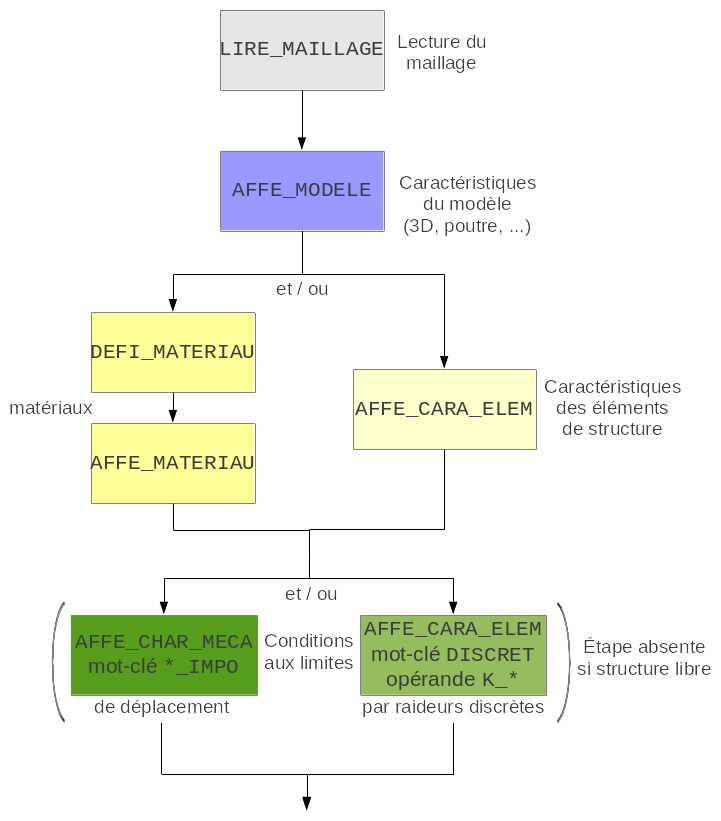2. Problem data#
The data set for a calculation of natural vibration modes is classical and common to most mechanical calculations in Code_Aster:
reading the mesh (operator LIRE_MAILLAGE),
assignment of the characteristics of the model: beam or 3D model or…? (AFFE_MODELE),
definition and assignment of materials (DEFI_MATERIAU and AFFE_MATERIAU) and/or assignment of the characteristics of structural elements (AFFE_CARA_ELEM),
possible imposition of boundary conditions (step absent if the structure is completely free). The particularity of the modal calculation in*Code_Aster currently is that it is generally necessary that the conditions at the displacement limits, if any, be imposed by dualization (AFFE_CHAR_MECA, keyword factor DDL_IMPO — the most common — or FACE_IMPO or ARETE_IMPO) rather than by kinematic loads (AFFE_CHAR_CINE).
The schematization of the data of a modal calculation problem.

Figure 2-a : Data entry of a modal calculation problem.
Notes:
For a modal calculation, no excitation is necessary, unless you want to take into account the effect of geometric stiffness brought by a static loading (advanced study). If applicable, the paragraph :ref:`3.2.2.3 <RefNumPara__896_550740383>` indicates the approach to be adopted (advanced study) . *
For a simple study, the structure is not prestressed: any boundary conditions when moving are generally zero. If we want to take into account the prestress generated by non-zero displacements, we must also adopt the approach indicated in paragraph :ref:`3.2.2.3 <RefNumPara__896_550740383>` . *